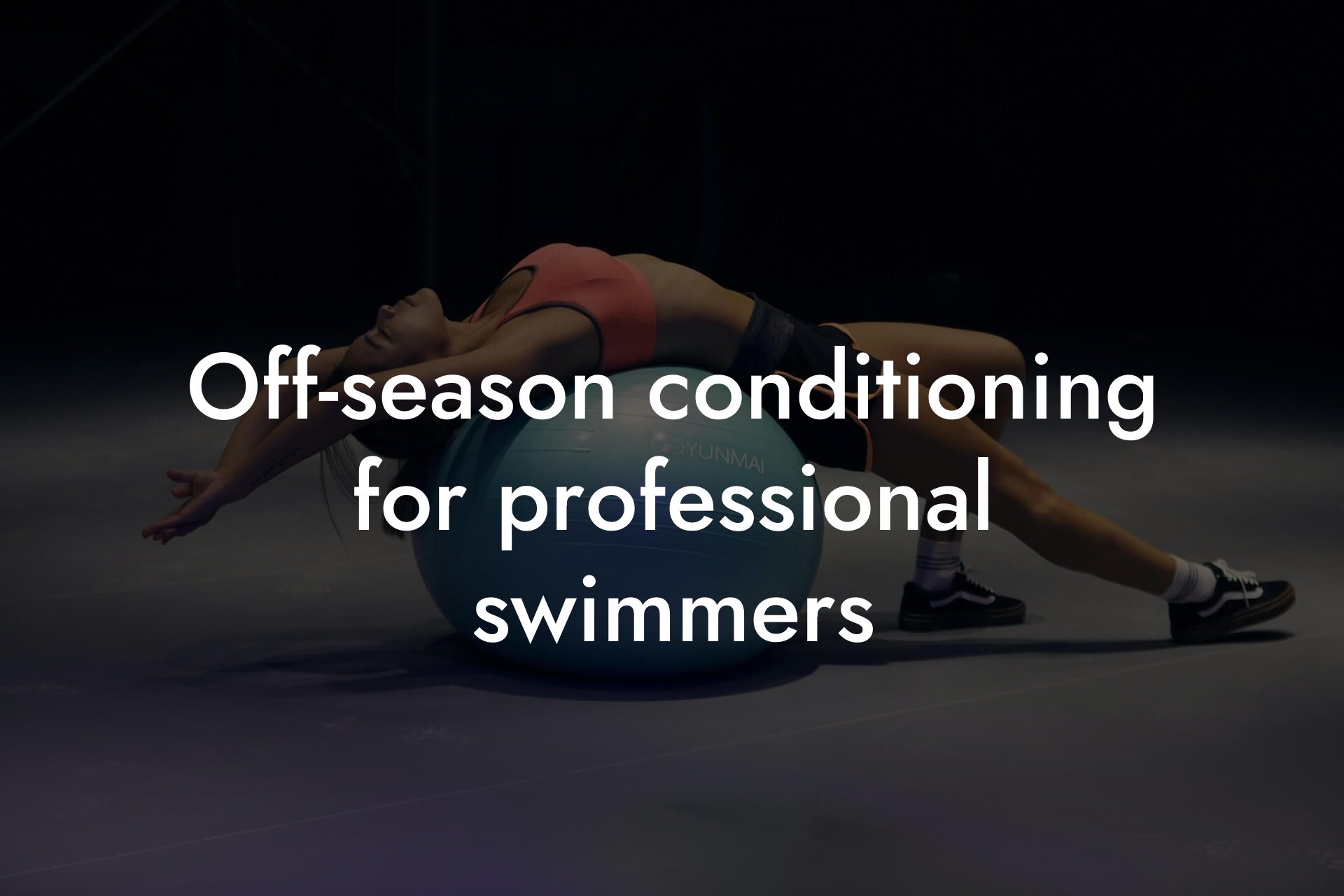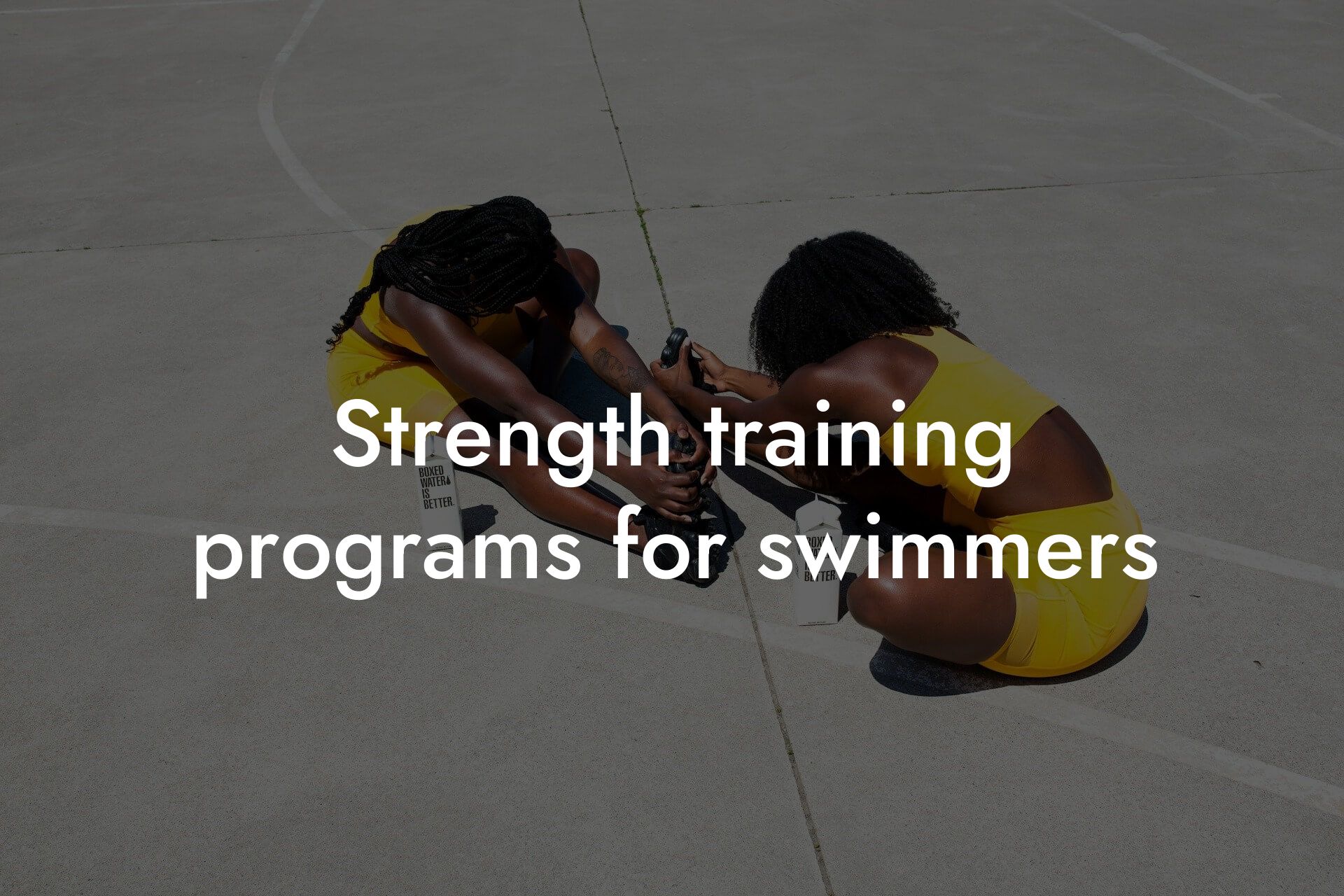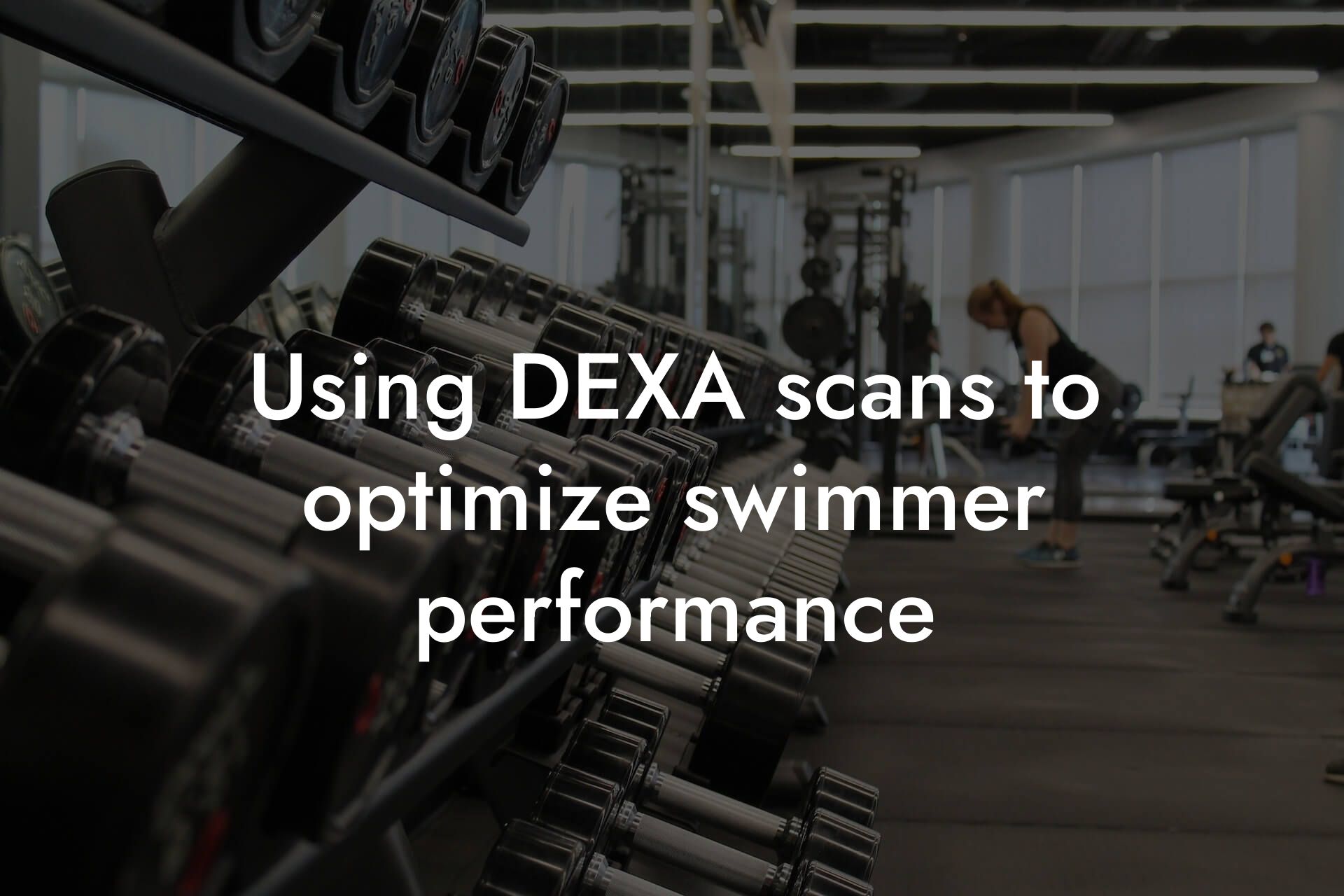As a high-earning professional, taking care of your physical appearance and physique is crucial for both personal and professional success. At Tano Performance Group, we understand the importance of having a comprehensive understanding of your body composition, which is why we use advanced DEXA machine technology to provide our clients with a complete body assessment. In this article, we will delve into the significance of flexibility and muscle mass in swimming, a popular form of exercise among professionals.
Table of Contents
Why Swimming is an Ideal Exercise for Professionals
Swimming is an excellent exercise option for professionals due to its low-impact nature, making it easy on the joints. It's also an effective way to improve cardiovascular health, build endurance, and strengthen muscles. Additionally, swimming can be adapted to suit different fitness levels, making it an accessible exercise option for professionals with busy schedules. Moreover, swimming can be a great way to relax and reduce stress, which is essential for high-achievers.
The Role of Flexibility in Swimming
Flexibility is a critical component of swimming, as it enables swimmers to move their limbs efficiently through the water. Good flexibility allows for a more streamlined body position, reducing drag and improving swimming technique. Furthermore, flexibility helps to prevent injuries, particularly in the shoulders, elbows, and knees, which are common areas of strain in swimmers. By incorporating stretching exercises into their routine, swimmers can improve their flexibility and overall swimming performance.
The Importance of Muscle Mass in Swimming
Muscle mass plays a vital role in swimming, as it provides the power and strength needed to propel through the water. Having adequate muscle mass, particularly in the upper body, helps swimmers to maintain a strong and efficient stroke. Moreover, muscle mass helps to improve swimming endurance, allowing swimmers to sustain a high intensity over a longer period. A well-developed muscular system also enhances swimming technique, reducing the risk of injury and improving overall performance.
The Ideal Muscle Mass Distribution for Swimmers
For swimmers, having an optimal muscle mass distribution is crucial. The ideal distribution involves having a strong upper body, particularly in the shoulders, back, and arms, as well as a well-developed core and legs. This distribution enables swimmers to maintain a powerful and efficient stroke, while also providing stability and control in the water. A DEXA scan can help swimmers to identify areas of muscle imbalance, allowing them to target specific muscle groups for improvement.
How to Improve Flexibility and Muscle Mass for Swimming
To improve flexibility and muscle mass for swimming, it's essential to incorporate a combination of stretching, strengthening, and conditioning exercises into your training routine. Some effective exercises for swimmers include shoulder rolls, arm circles, and leg swings to improve flexibility, as well as push-ups, pull-ups, and squats to build muscle mass. Additionally, incorporating plyometric exercises, such as box jumps and burpees, can help to improve power and explosiveness in the water.
The Benefits of DEXA Scanning for Swimmers
A DEXA scan is an invaluable tool for swimmers, providing a comprehensive analysis of body composition, including muscle mass, bone density, and body fat percentage. By using a DEXA scan, swimmers can identify areas of muscle imbalance, track changes in body composition over time, and optimize their training and nutrition programs. At Tano Performance Group, our DEXA machine technology provides accurate and reliable results, helping swimmers to take their performance to the next level.
In conclusion, flexibility and muscle mass are essential components of swimming, and understanding their importance can help professionals to optimize their swimming performance. By incorporating stretching, strengthening, and conditioning exercises into their training routine, swimmers can improve their flexibility and muscle mass, leading to enhanced swimming technique, increased endurance, and reduced risk of injury. At Tano Performance Group, we are committed to providing our clients with the tools and knowledge they need to achieve their fitness goals, and our DEXA machine technology is an integral part of this process.
Frequently Asked Questions
What is the importance of flexibility in swimming?
Flexibility is crucial in swimming as it allows for a more efficient and effective stroke. When you have good flexibility, you can move your arms and legs through a fuller range of motion, generating more power and speed in the water. Additionally, flexibility helps reduce the risk of injury by reducing the stress and strain on your muscles and joints.
How does muscle mass impact swimming performance?
Muscle mass plays a significant role in swimming performance as it provides the power and endurance needed to propel yourself through the water. Having adequate muscle mass, particularly in the upper body, helps generate force and speed, while also enabling you to maintain a strong and efficient stroke over longer distances.
What are the benefits of having good flexibility in swimming?
Good flexibility in swimming offers several benefits, including improved technique, increased speed and efficiency, reduced risk of injury, and enhanced overall performance. Flexible swimmers can also recover faster and experience less fatigue, allowing them to train and compete at a higher intensity.
How can I improve my flexibility for swimming?
Improving flexibility for swimming requires a combination of stretching exercises, strength training, and proper technique. Focus on exercises that target your shoulders, chest, back, and hips, such as shoulder rolls, chest stretches, and hip flexor stretches. Additionally, incorporate strength training exercises that target your core and upper body, such as pull-ups and dumbbell rows.
What are the best exercises for building muscle mass for swimming?
The best exercises for building muscle mass for swimming include pull-ups, dumbbell rows, shoulder presses, and lat pulldowns. These exercises target the muscles of the upper body, including the latissimus dorsi, trapezius, and deltoids, which are essential for generating power and speed in the water.
How often should I stretch to improve my flexibility for swimming?
It's recommended to stretch at least 2-3 times per week, with a focus on exercises that target your shoulders, chest, back, and hips. Aim to hold each stretch for 20-30 seconds and repeat for 2-3 sets. Consistency is key, so try to make stretching a regular part of your swimming routine.
Can I improve my flexibility and muscle mass at the same time?
Absolutely! In fact, improving flexibility and muscle mass simultaneously can have a synergistic effect, leading to even greater improvements in swimming performance. Focus on exercises that target both flexibility and strength, such as resistance band exercises or plyometric exercises.
How long does it take to see improvements in flexibility and muscle mass?
The time it takes to see improvements in flexibility and muscle mass varies depending on individual factors, such as current fitness level, training frequency, and consistency. However, with regular stretching and strength training, you can start to see improvements in as little as 4-6 weeks.
What are some common mistakes swimmers make when it comes to flexibility and muscle mass?
Common mistakes swimmers make include neglecting to stretch regularly, focusing too much on strength training and not enough on flexibility, and failing to incorporate exercises that target the core and upper body. Additionally, swimmers may not be giving their muscles adequate time to recover and rebuild, leading to fatigue and decreased performance.
How can I incorporate flexibility and strength training into my swimming routine?
Incorporating flexibility and strength training into your swimming routine can be as simple as adding 10-15 minutes of stretching and strength exercises to your warm-up or cool-down routine. You can also try incorporating strength training exercises into your dry land training, such as weightlifting or resistance band exercises.
What are some exercises I can do on land to improve my swimming performance?
Exercises you can do on land to improve your swimming performance include push-ups, pull-ups, dumbbell rows, and shoulder presses. You can also try plyometric exercises, such as box jumps and medicine ball throws, to improve your power and explosiveness.
How does flexibility impact my swimming technique?
Flexibility has a significant impact on swimming technique, as it allows for a more efficient and effective stroke. When you have good flexibility, you can maintain a streamlined position in the water, reduce drag, and generate more power and speed.
Can I improve my flexibility and muscle mass through swimming drills alone?
While swimming drills can help improve flexibility and muscle mass to some extent, they should be supplemented with targeted stretching and strength training exercises. Swimming drills can help improve technique and efficiency, but they may not provide the same level of flexibility and strength gains as dedicated stretching and strength training exercises.
How does muscle mass impact my swimming endurance?
Muscle mass plays a significant role in swimming endurance, as it provides the power and energy needed to sustain a strong and efficient stroke over longer distances. Having adequate muscle mass, particularly in the upper body, helps you maintain a strong pace and resist fatigue.
What are some common injuries associated with poor flexibility and muscle mass in swimming?
Common injuries associated with poor flexibility and muscle mass in swimming include shoulder injuries, such as rotator cuff strains and tendinitis, as well as back and neck injuries. Additionally, poor flexibility and muscle mass can lead to fatigue and decreased performance.
How can I maintain my flexibility and muscle mass during periods of intense training?
Maintaining flexibility and muscle mass during periods of intense training requires a focus on active recovery, including stretching, foam rolling, and self-myofascial release. Additionally, prioritize proper nutrition and adequate rest and recovery to allow your muscles to rebuild and adapt.
What are some tips for incorporating flexibility and strength training into my busy schedule?
Tips for incorporating flexibility and strength training into your busy schedule include finding exercises that can be done in short intervals, such as during commercial breaks or while waiting in line. You can also try incorporating exercises into your daily routine, such as doing push-ups or squats during breaks at work.
How does flexibility and muscle mass impact my overall health and wellness?
Flexibility and muscle mass have a significant impact on overall health and wellness, as they can improve posture, reduce the risk of injury, and enhance overall physical function. Additionally, having good flexibility and muscle mass can improve mental health and reduce stress and anxiety.
What are some common misconceptions about flexibility and muscle mass in swimming?
Common misconceptions about flexibility and muscle mass in swimming include the idea that flexibility is only important for distance swimmers, or that muscle mass is only important for sprinters. In reality, flexibility and muscle mass are essential for swimmers of all levels and distances.
How can I measure my progress in terms of flexibility and muscle mass?
Measuring progress in terms of flexibility and muscle mass can be done through a variety of methods, including range of motion tests, strength tests, and body fat percentage measurements. Additionally, tracking your swimming performance, such as your times and distances, can provide a good indication of your progress.
What are some resources I can use to learn more about flexibility and muscle mass in swimming?
Resources you can use to learn more about flexibility and muscle mass in swimming include online articles and videos, swimming coaches and trainers, and sports medicine professionals. Additionally, you can try incorporating flexibility and strength training exercises into your swimming routine and tracking your progress to see what works best for you.
Here are some related articles you might love...
- Off-season conditioning for professional swimmers
- Strength training programs for swimmers
- Using DEXA scans to optimize swimmer performance
- Bone density and its impact on injury prevention in swimming
- Recovery techniques for swimmers after intense training
- Balancing strength and endurance in swimming
- Nutrition strategies for swimmers to maintain energy levels
- The role of body composition in swimming speed and endurance
- Reducing body fat for better buoyancy and speed in swimming
Zak Faulkner
Zak Faulkner is a leading authority in the realm of physical health and body composition analysis, with over 15 years of experience helping professionals optimise their fitness and well-being. As one the experts behind Tano Performance Group, Zak has dedicated his career to providing in-depth, science-backed insights that empower clients to elevate their physical performance and overall health.
With extensive knowledge of DEXA technology, Zak specializes in delivering comprehensive body assessments that offer precise data on body fat, muscle mass, bone density, and overall physique. His expertise enables individuals to make informed decisions and achieve their fitness goals with accuracy and confidence. Zak’s approach is rooted in a deep understanding of human physiology, combined with a passion for helping clients unlock their full potential through personalised strategies.
Over the years, Zak has earned a reputation for his commitment to excellence, precision, and client-focused service. His guidance is trusted by top professionals who demand the best when it comes to their health. Whether advising on fitness programs, nutritional strategies, or long-term wellness plans, Zak Faulkner’s insights are a valuable resource for anyone serious about taking their health and fitness to the next level.
At Tano Performance Group, Zak continues to lead our Content Team revolutionising how professionals approach their physical health, offering unparalleled expertise that drives real results.




